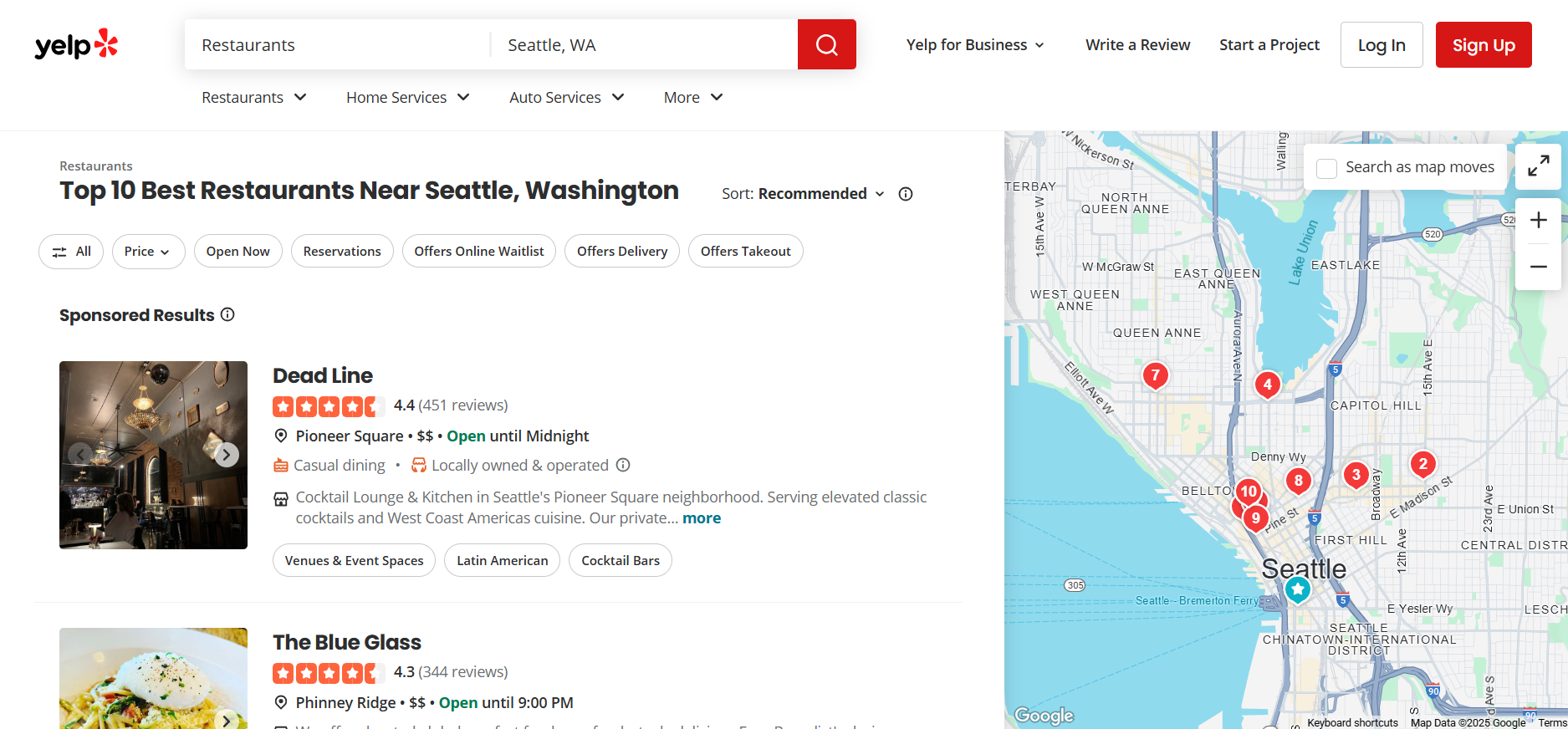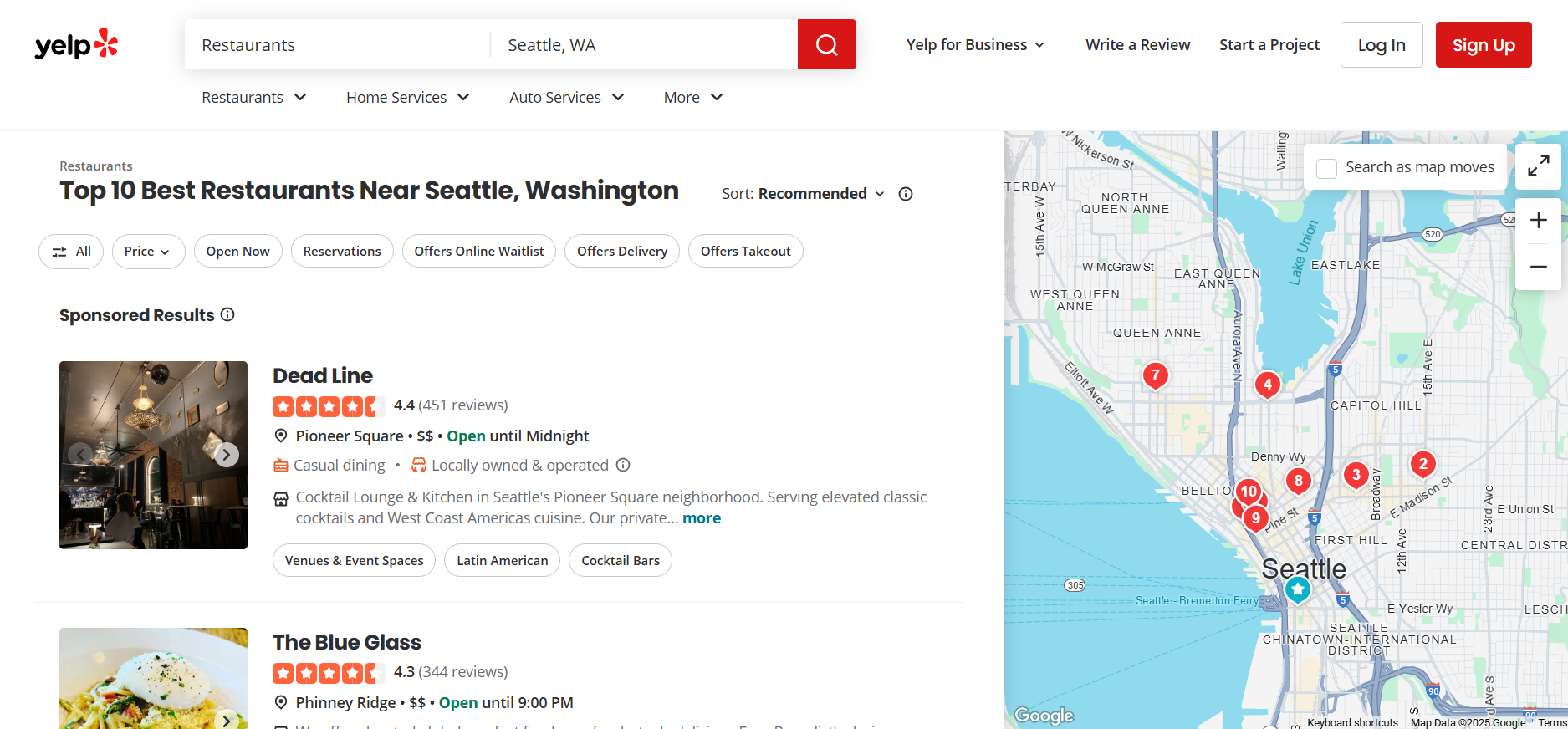The Only Types of Social Proof That Sway Decision Making

Social proof is rooted in psychology, playing on the idea that people are influenced by the actions and opinions of others, particularly when they aren’t sure what to do in a situation. When you go to a website trying to figure out if you should make a purchase, and you see reviews on the homepage from customers, that’s social proof.
There are many types of social proof. But these 5 are the only ones that really sway decision-making:
- User-generated content (UGC) on social media
- Reviews on your website, Google, and Yelp
- Video testimonials from real customers
- Endorsement Trust badges with quotes from the companies
- Real-time purchase and subscriber stats on your website
User Generated Content (UGC) on Social Media
When I want to know if a purchase is worth it, I look for real customers to tell me. They’re more credible than anyone to me, especially when they aren’t being paid for their opinion. And when that opinion comes in the form of UGC.
Social media is one of the best places to find UGC. People are always praising or berating brands on different platforms in posts, comments, livestreams, and forums. My favorite type of UGC is the videos people post unboxing products and trying them. You get to see people’s genuine reaction to a product, and that rubs off on you.
Organi Grow Hair Co. has some of the best UGC. One of the biggest questions people have when it comes to hair products is, “Will it work on MY hair, though?” When you see the videos and posts from people of all backgrounds using their products, that question gets answered quickly and really convinces you to buy.

Use social listening tools to monitor when customers are talking about your brand and products. Hootsuite has one of the best social listening tools. BuzzSumo is another solid option.
If you don’t have the budget for social listening tools, do the work manually. Comb through your comments every day for positive things people say about your products or services. Set up a hashtag that your customers should use when they post something about your brand, and review that every day. It might also be a good idea to have a submission page on your website or an email that customers can send UGC to.
Make sure you get permission to use UGC. And, most importantly, reshare as much of it as you can. It encourages more and more people to send in UGC because there’s a real chance of them being in the spotlight.
Reviews on Your Website, Google, and Yelp
When I type a business into Google, I immediately go to the reviews, and I know I’m not the only one.

Same thing on Yelp. You can search for “Best restaurants in my city,” and get a whole list from Yelp with links to all the reviews.

Google Reviews and Yelp are two of the most recognized review platforms. So, set up your Google Business Profile and verify it. And set up your business profile on Yelp and put your Yelp badge on your website so people know they can leave a review there.
You also want to put reviews on your website. Many people who visit your site are on the verge of making a purchasing decision. Having those reviews readily available for them could be the deciding factor.

Invite customers to leave a review after a purchase. Do a short email campaign with maybe 2-3 emails sent a few days after a purchase, and then again a week after the purchase. Put the option you really want them to use in the first email. Then, put all three options in the second email. You should also let customers know about reviews on your website. Do a short blurb about you collecting them on your home page and the product catalog page.
Video Testimonials From Real Customers
Reading people’s words is convincing. But what’s even more powerful to me is video. I said it earlier about UGC. Seeing people’s emotions, passion, and body language when they’re talking about a product or brand experience resonates. When they can feel them through the screen, that’s when it really helps potential customers make a decision.
Now, video testimonials can be a little more formal and do require some sort of production. But they can definitely make a difference if you can get passed the challenges. Slack is a great example of this. They have well-put-together video testimonials of some of their high-profile clients, and display them prominently on their home page.

Sourcing video testimonials might be a bit challenging because a lot of people aren’t comfortable in front of a camera or don’t have time to meet up with you to do them. But you can give them the questions in advance and do some practice with them to help. You can also offer to record someone in their place of choice or do the testimonial virtually.
Endorsement Trust Badges With Quotes From the Companies
I know, I know. Trust badges might feel a little less credible at first, considering people can just screenshot a brand’s logo from the internet and put it on their website and say they love their products. But there’s a way to beef up their impact as social proof.
Go specifically for endorsement trust badges from businesses that are really credible, first. When people see that a big brand backs you, it can be pretty persuasive. But what will get them to really feel these badges is an actual quote from the person you worked with at that brand. Look at this example from Blk Opl Beauty.

Allure is a notable brand. But imagine just having their name up there and not the quote underneath. Not as powerful, is it? I also like the section underneath. You can hold them accountable and actually go to these stores and see if their products are there.
If you’re going to use endorsement trust badges as social proof, include a quote or snippet of a review instead of just publication names or brand logos.
Real-Time Purchase and Subscriber Stats on Your Website
This is one of the most underrated types of social proof. I don’t see it on a lot of websites. But I noticed that when I do see real-time purchase or subscriber stats popping up in the bottom corner of a website, it’s intriguing. And when they keep coming up, it’s like, “Oh! People are really buying or subscribing!”
You can show website visitors that other people are going crazy for your product or email list right now. Aside from social proof, it’s also got a hint of fear of missing out (FOMO) in it. Have a countdown timer for your sale at the top and show purchases from that sale with real-time stats, and you’re definitely going to get people to make a purchasing decision.
Not only does TrustPulse offer the software for real-time stat popups, but they also use it themself to show you how attention-grabbing it can be.

If you want to use TrustPulse, it only takes a few minutes to set up, and they’re having a sale right now with plans starting at $5 a month.
Why is Social Proof So Powerful and What are the Benefits?
Social proof is so powerful because people are easily influenced by others. The average person will choose to do what the majority of people are doing. It also makes decision-making easier. A lot of people have already done the work for you, taking the time to look into a brand and experience it. So, it saves you a lot of time and energy.
The top benefits of social proof are:
- You become more credible as more people vouch for you.
- You get more sales because your social proof convinces people to purchase.
- You can save time and money on marketing by leveraging other people’s influence.
- Potential and current customers engage with you more. Potential customers keep coming back because they want to learn more, and current customers want to put out more UGC or talk about your brand more, with the hope of being highlighted on your pages.
Where Do You Put Social Proof?
Once social proof starts rolling in, you might get a little panicky and try to put it wherever you can find a place for it. But I want you to be more strategic than that. Put social proof where it will have the most impact. I have a list of those places below:
- Your social media accounts
- The checkout page
- Your website’s homepage
- Your signup page for your email list
- Your About Us page
- Landing pages for specific products
- In search engine ads or social media ads
Common Mistakes Businesses Make With Social Proof
Let’s make sure that you don’t do social proof wrong. Here are five of the most common mistakes businesses make when using social proof:
Best Practices for How to Use Social Proof
Let’s also make sure you use social proof the right way. Here are four best practices to live by:



